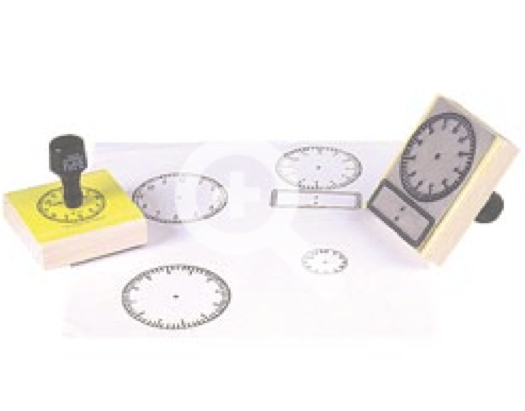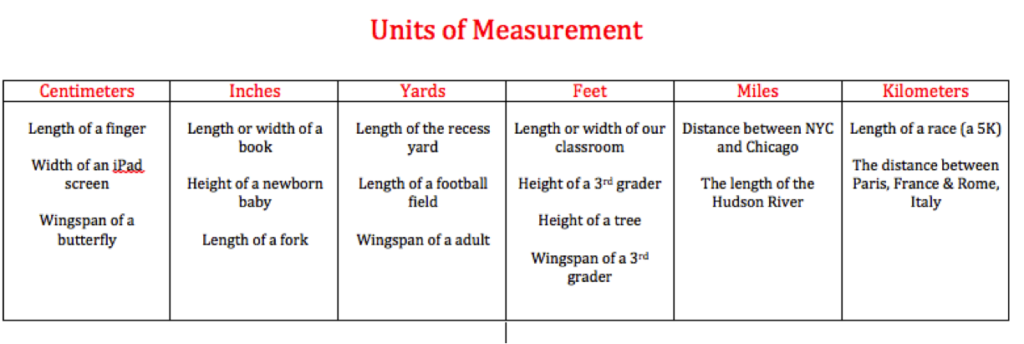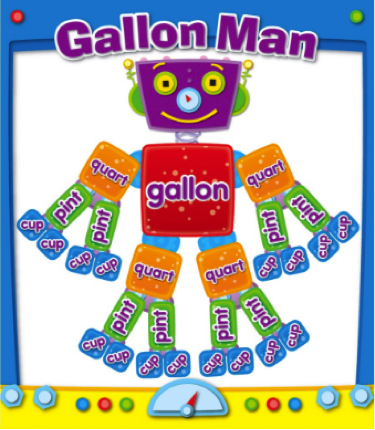Measurement
posted by Stephanie Forsman
 Measurement is an area of my math curriculum that I often feel gets neglected, rushed through, and sometimes, at crunch time, overlooked all together. As a result, I have worked on infusing small aspects of measurement into the routines of the day. From linear measurement to volume, weight and mass to telling time, temperature and money, measurement is an everyday skill, “real life math.” It is important that children know how to identify appropriate units and choose the correct tools and technology for measuring those units.
Measurement is an area of my math curriculum that I often feel gets neglected, rushed through, and sometimes, at crunch time, overlooked all together. As a result, I have worked on infusing small aspects of measurement into the routines of the day. From linear measurement to volume, weight and mass to telling time, temperature and money, measurement is an everyday skill, “real life math.” It is important that children know how to identify appropriate units and choose the correct tools and technology for measuring those units.
One of my favorite topics that I consistently revisit throughout the year is Time. Even in 3rd and 4th grade, some children cannot tell time and rely on the adults in their life to tell them where they need to be and when. At the beginning of the school year, regardless of what grade I am teaching, I do a quick lesson on Time – 24 hours in a day, AM & PM, the short hand is the hour hand and the long hand is the minute hand. One of my favorite tools to teach Time is a Judy Clock. I have a class set and each student has one in which they practice telling time and learning the concept of elapsed time. A Judy Clock features easy-to-read numerals that show elapsed time in 5 min intervals. The clock makes learning to tell the time simple and fun for children and comes with visible functioning gears that maintain correct hour hand and minute hand relationships.
I will routinely ask the children to show me the time on their clocks or I will pose questions, “if it is 10:45 AM now and we have lunch at 12:00 PM, how much time does that leave us for snack and math?” Another handy time telling tool I have is a rubber clock stamp.

I will routinely ask the children to show me the time on their clocks or I will pose questions, “if it is 10:45 AM now and we have lunch at 12:00 PM, how much time does that leave us for snack and math?” Another handy time telling tool I have is a rubber clock stamp.
When I put up the day’s schedule on the board, I will put the event and the time and then have a blank picture of a clock where the children will draw in the correct time using the hour and minute hands. I will write times such as “Math – 10:45 AM” with a blank clock next to it and make sure that the child responsible for noting the time will make sure that the hour hand is closer to the number 11 than to the number 10.
Just like my parents did with my brother and I when we were growing up, I like to have a height chart located on the inside of my doorway. One of our beginning of the year activities is to partner up and mark your height on the door. I use a cloth tape measure for this activity and it does require a pre-lesson on how to use the measurement instrument. The first year that I did this activity, I just gave the children the tape measure and had them go at it. I quickly realized that the majority of the children did not know what to do when they had run out of tape measure but still had not completely measured their friend. I have a class set of 60 inch, cloth tape measures that the children use throughout the year. I find that the cloth tape measures are easier to manipulate, cheaper, and easier to store. After a lessons in which we discuss “How many inches in a foot?” and “If a child measures 52 inches, how would we record that in feet and inches?”, we place our names, the date and our heights against the door. We do this activity 3 times a year and at the end of the year, each child figures out how much they’ve grown through the school year. In our end-of-the-year reflection, we include our physical growth as part of the child’s reflection, “This year, I have grown 3 ½ inches and have become a much more of a risk taker when approaching difficult math problems.”
It is also extremely important to allow them exploration of various types of measurement tools and educate them to which tool is best for which situation. Measuring how long things are, how tall they are, or how far apart they might be are all examples of length measurements. I expose the children to all sorts of measurement units in which they can use to measure various objects. Centimeters, inches, feet, yards, miles, and kilometers are all the units we use to measure distance, height, and length.
We brainstorm items we’d like to measure and then categorize them according to the units of measurement we’d use.
I like to put this conversion chart up in the classroom for constant reference –
1 foot = 12 inches
1 yard = 3 feet = 36 inches
1 mile = 1,760 yards = 5,280 feet = 63,360 inches
Liquid measurement is another aspect of measurement that when I run across it, often need to look up a conversion chart to make sure that I am measuring correctly. I am not always certain that 2 pints equal a quart since I very rarely use these units of measurement. Again, this is when a conversion chart comes in handy but we make our own “Gallon Man” with empty, recycled containers that the children bring in from home. We bring in one plastic gallon (milk), 4 quarts (milk or juice), 8 pints (ice cream, yogurt), and 16 cups (yogurt, sour cream). Preferably all plastic and clean. Before I put up a conversion chart, I essentially create a water table and see if the children can come up with the equivalents on their own. “How many quarts equal a gallon?”, “If there are 2 cups in a pint, how many cups in a quart?” After figuring out the conversions ourselves, we create “Gallon Man.” We actually create this by attaching the quarts to the gallon with holes and wires for the arms and legs and then 2 pints to each quart and finally, 2 cups to each pint. We should rename our creature “Gallon Robot” or “Conversion Robot.”
We hang up “Gallon Man” in our classroom for easy reference.
Teaching measurement or any concept for that manner, using hands-on activities, manipulatives, and real-life applications makes concepts more interesting, engaging, and fun for my students. I get a lot of my ideas from Pinterest and often, these “real life math” lessons take little time and don’t take away time from keeping pace with my mandatory math curriculum.



The article on measurement was very good it provided examples for the data collection process. It used bright and colorful materials with a variety of choices that caught the attention of the children , it also provided hands on activities that lets the children be aware of their surroundings.. The children were not restricted to just measuring using a ruler the used water and were able to ask questions and draw conclusions.The got to use real life math lesson which makes learning fun and enjoyable.
I totally agree with the user above regarding the article on measurement. It used examples with bold colors as well as child friendly recognizable images to teach valuable skills in a way that is non restrictive and fun.
I enjoyed reading the article above. I think the bright, kid-friendly items can help further the kids knowledge in measurements.
Having the students bring items from home helps the family engage with the classroom. Connections can be made between math and daily life with the common items that the students use in daily life.
I like to use a lot of non-standard things to measure, usually once a month we use something to measure how tall we are, we take a picture then at the end of the year we compare all the picture to see how much we have grown over the school year, (I usually use apples cutouts taped to the end of the cubbies and then measure the children, (usually change them for each season and/ or them. The children love it!
I think this is great, the more opportunities to involve measurement the better.
So many good ideas for children in elementary. As a preschool teacher, we use blocks, cubes and things like that to measure – but still have to address the issue of \”running out\” of cubes when measuring – what do we do? Problem solving at it\’s best! – Ann
Wow, there are a lot of great ideas in this post. I like that you have not only presented the ideas, but also some background info behind it. I can\’t wait to incorporate a few of these ideas in my daily routine.
That is a lot of fantastic ideas. I plan on having younger children and will be using weights and measures differntly than i had originally thought.
I think this is a terrific reminder, especially about the concepts of ‘time’ and ‘elapsed time’. Gallon Bog is a big help to me, as an adult!
I love the idea of connecting home and school for measurement. I especially love the idea of having a growth chart in the classroom!
We love using non standard units of measurement with our toddlers
Really I would love to incorporate all these tools of measuring, The kids love to estimate with non standard units of measurement so i would love to incorporate both to use in our classes.
I really love the idea of the “Gallon Robot!”
LOVE the gallon man poster! Great suggestions for keeping measurement ongoing in the classroom.
I like a lot this information about measurement. Now, i have many ideas for ours childrens.
Thank you.
I like the ideas to use in classroom
When working with toddlers is it appropriate to have children measuring the classroom, table, and blocks etc?
this is so cool, it is such a helpful way to explain and show children how the different measurements work
Some good ideas to incorporate in the classroom!
It’s interesting to use non standard units of measurements, some can come close to standard measurements.